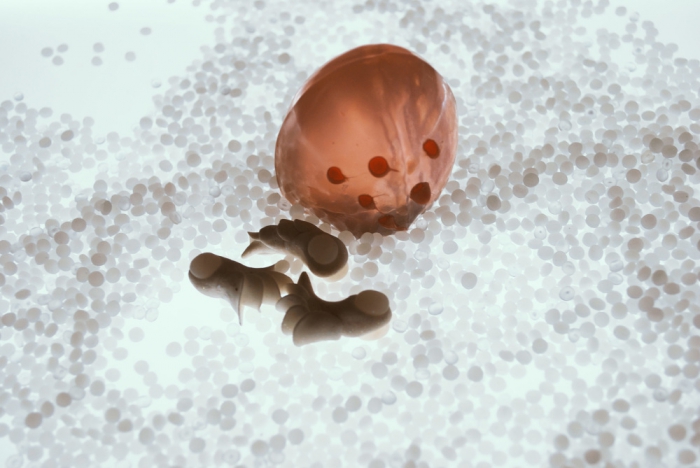Project Description: An Ecosystem of Excess
26.01.2012
26.01.2012
Project Description: An Ecosystem of Excess
An Ecosystem of Excess is an attempt to create a post-human eco-system, a living community of speculative organisms and their environment. The project takes the idea that we are surrounded by "man-made extreme environments" as its starting point. A man-made extreme environment is a site of excess, where leftovers of our capitalistic desires and consumerist actions are accumulated. Hence junkyards, landfills, wastelands are all examples of "man-made extreme environments'. An Ecosystem of Excess starts in the Pacific Trash Vortex. Discovered in 1985 by Captain Charles Moore, this site is a floating nexus of plastic waste covering roughly 5000 km² area of the Pacific. Pacific Trash Vortex is a monument of plastic waste at a global scale. Referring to Kantian aesthetics, it is a truly 'sublime' kinetic sculpture built by all the nations around the Pacific Ocean over many years of mindless, unsustainable consumption. Pacific Trash Vortex is where plastic bottle caps meet the Laysan albatross' digestive tract (1). In other words out there in the ocean, there is a site of interchange between the organic and the synthetic, a site of fusion between nature and culture. According to the primordial soup theory, about four billion years ago life starts in the oceans when inorganic matter turns into organic molecules. Today, the oceans have turned into a plastic soup (2). This project asks a very simple question:”If life started today in the oceans of plastic, what kind of life forms would emerge out of this contemporary primordial ooze?" The answer to this question is – An Ecosystem of Excess: a new Linnaean taxonomy of species of excess that can thrive in man-made extreme environments such as the Pacific Trash Vortex. The project suggests a series of interconnected species burgeoning in pelagic plastic, chemical sludge and other debris. The design of ecosystem will follow Jacob von Uexkull's concept of ‘Umwelt’: the perceptual world in which an organism acts and as a subject (3). Hence big emphasis will be given to the sensory modalities of each organism; their "worldview" will be simulated via diagrams, models and code. An Ecosystem of Excess is born at the intersection of ecological and feminist thinking; hence it negates the utilitarian, anthropomorphic approach which disregards the intrinsic value of any life forms regardless of its use value to human subjects. Therefore an ‘Umwelt’ for every single organism in the ecosystem is generated as a first step to the speculative design process.
(1) Moore, Charles and Cassandra Philips. Plastic Ocean: How a Sea Captain's Chance Discovery Launched a Determined Quest to Save the Oceans, [120-122] Avery, 2011
(2) Captain Charles Moore holding a sample from the plastic ocean
(3) Uexkull, Jacob Von. A Foray into the Worlds of Animals and Humans: with A Theory of Meaning (Posthumanities), 2010
share
Related participants:
Related events:
Related texts:

